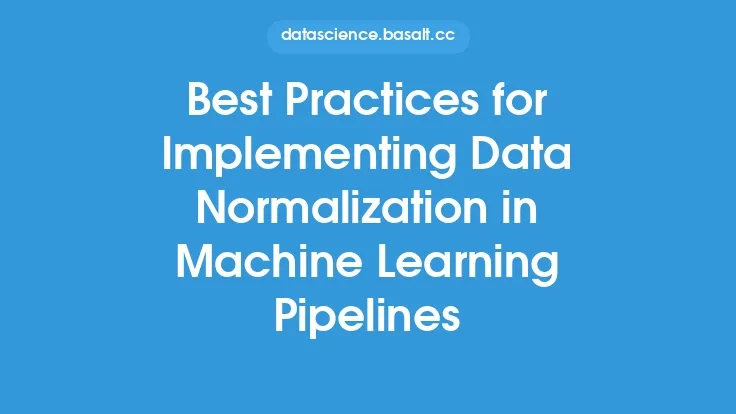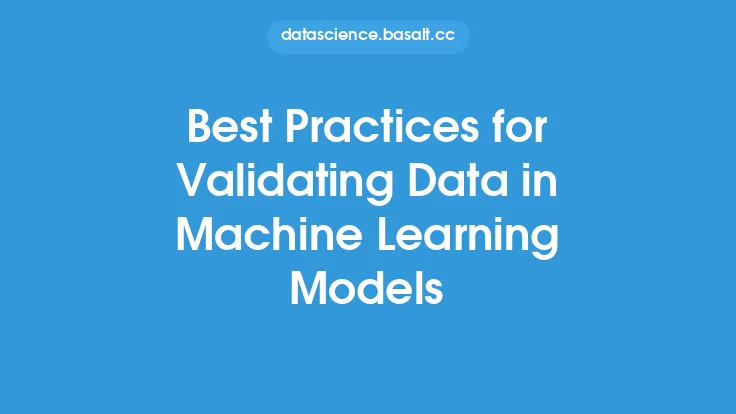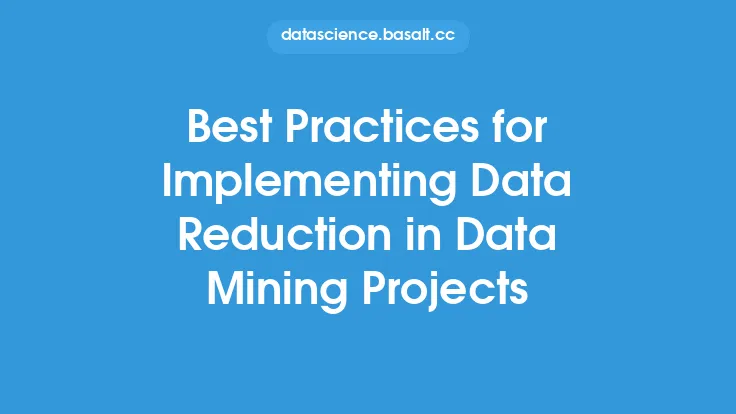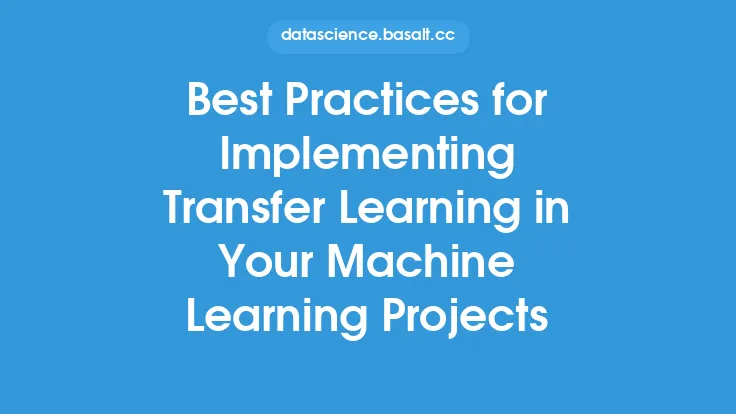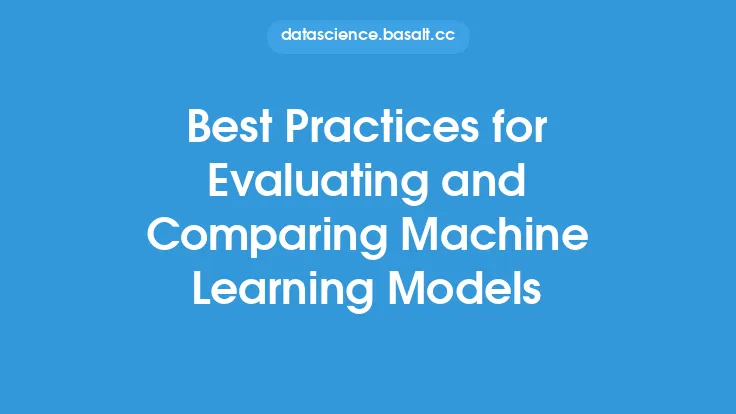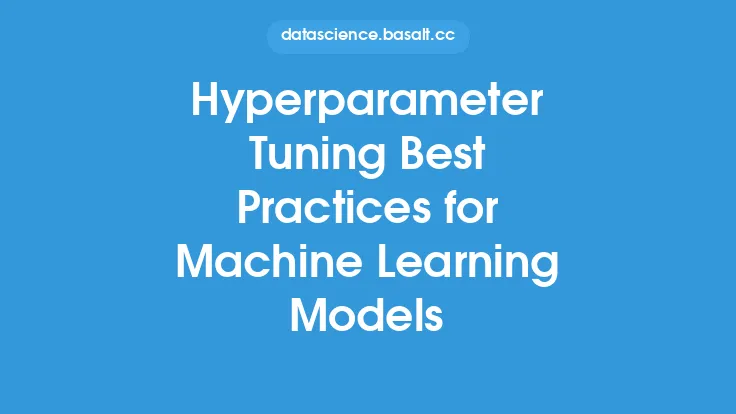When working with machine learning models, it's essential to have a robust dataset that provides valuable insights and patterns. However, dealing with large datasets can be overwhelming, and this is where data reduction comes into play. Data reduction is a process of reducing the size of a dataset while preserving its integrity and usefulness. In this article, we'll delve into the best practices for data reduction in machine learning, exploring the techniques, tools, and strategies that can help you optimize your dataset and improve model performance.
Introduction to Data Reduction Techniques
Data reduction techniques are designed to reduce the dimensionality of a dataset, which can help improve model performance, reduce noise, and enhance data visualization. There are several techniques available, including feature selection, feature extraction, and dimensionality reduction. Feature selection involves selecting a subset of the most relevant features from the original dataset, while feature extraction involves transforming the existing features into new ones that are more informative. Dimensionality reduction, on the other hand, involves reducing the number of features in the dataset while preserving the most important information.
Evaluating Data Quality
Before applying data reduction techniques, it's crucial to evaluate the quality of your dataset. This involves checking for missing values, outliers, and noisy data. Missing values can be handled using imputation techniques, such as mean or median imputation, while outliers can be detected using statistical methods, such as the z-score method. Noisy data can be handled using smoothing techniques, such as regression or interpolation. Evaluating data quality is essential to ensure that the data reduction techniques are applied to a clean and reliable dataset.
Feature Selection Methods
Feature selection is a critical step in data reduction, as it helps select the most relevant features that contribute to the model's performance. There are several feature selection methods available, including filter methods, wrapper methods, and embedded methods. Filter methods, such as correlation analysis and mutual information, evaluate the relevance of each feature independently, while wrapper methods, such as recursive feature elimination, evaluate the performance of the model with different feature subsets. Embedded methods, such as L1 regularization, integrate feature selection into the model training process.
Dimensionality Reduction Algorithms
Dimensionality reduction algorithms are used to reduce the number of features in a dataset while preserving the most important information. There are several algorithms available, including principal component analysis (PCA), t-distributed Stochastic Neighbor Embedding (t-SNE), and autoencoders. PCA is a linear algorithm that projects the data onto a lower-dimensional space, while t-SNE is a non-linear algorithm that preserves the local structure of the data. Autoencoders are neural networks that learn to compress and reconstruct the data, often using a lower-dimensional representation.
Data Reduction Tools and Software
There are several tools and software available for data reduction, including Python libraries, such as scikit-learn and pandas, and data visualization tools, such as Tableau and Power BI. Scikit-learn provides a wide range of algorithms for feature selection, dimensionality reduction, and data preprocessing, while pandas provides data structures and functions for efficient data manipulation. Tableau and Power BI provide interactive visualization tools that can help explore and understand the data.
Best Practices for Data Reduction
When applying data reduction techniques, it's essential to follow best practices to ensure that the resulting dataset is reliable and useful. These best practices include evaluating data quality, selecting the most relevant features, using dimensionality reduction algorithms, and validating the results. It's also essential to consider the problem domain and the goals of the analysis, as different techniques may be more suitable for different applications. Additionally, it's crucial to document the data reduction process and provide transparency into the methods and techniques used.
Common Challenges and Pitfalls
Data reduction can be challenging, and there are several common pitfalls to avoid. These include over-reduction, under-reduction, and feature correlation. Over-reduction can result in losing important information, while under-reduction can result in retaining too much noise. Feature correlation can lead to redundant features, which can negatively impact model performance. To avoid these pitfalls, it's essential to carefully evaluate the data and select the most relevant features, and to use dimensionality reduction algorithms that preserve the most important information.
Future Directions and Emerging Trends
Data reduction is a rapidly evolving field, with new techniques and algorithms emerging regularly. Some of the emerging trends include the use of deep learning algorithms for data reduction, the development of new dimensionality reduction algorithms, and the application of data reduction techniques to emerging domains, such as natural language processing and computer vision. As data continues to grow in size and complexity, data reduction will play an increasingly important role in machine learning and data analysis, and it's essential to stay up-to-date with the latest developments and advancements in the field.
Conclusion
Data reduction is a critical step in machine learning and data analysis, as it helps optimize datasets and improve model performance. By following best practices, using the right techniques and tools, and avoiding common pitfalls, you can ensure that your dataset is reliable, useful, and provides valuable insights. As the field continues to evolve, it's essential to stay informed about emerging trends and developments, and to apply data reduction techniques in a way that is transparent, reproducible, and effective.
